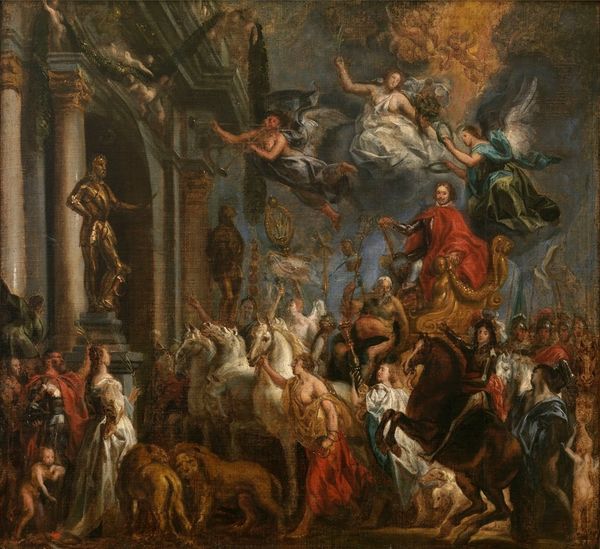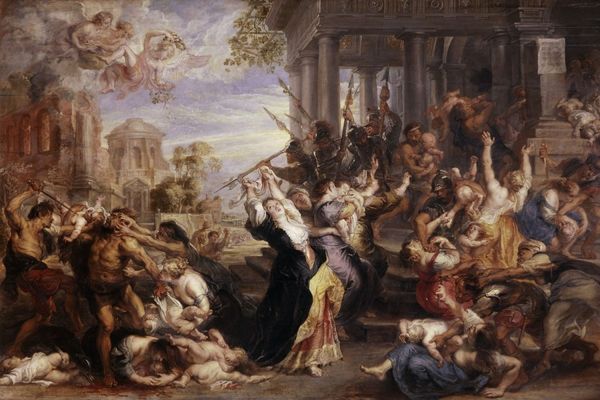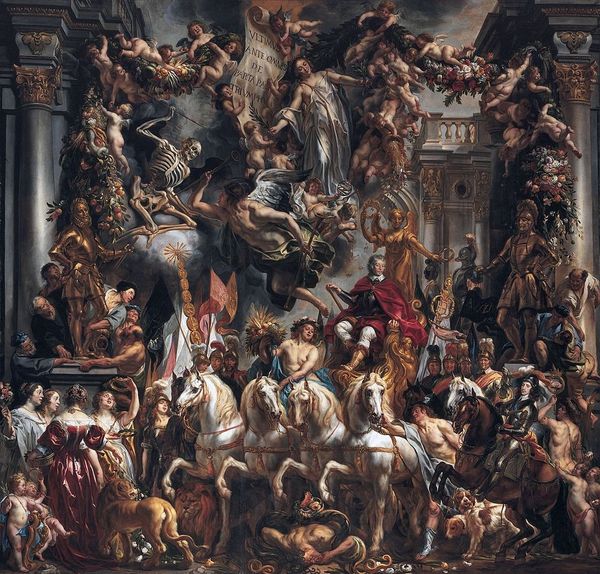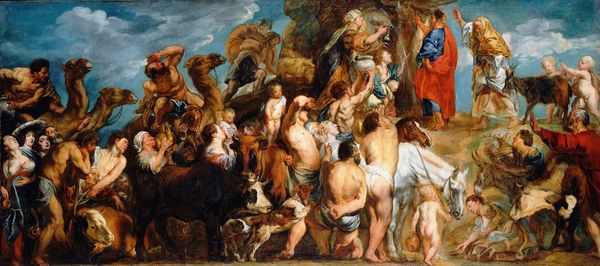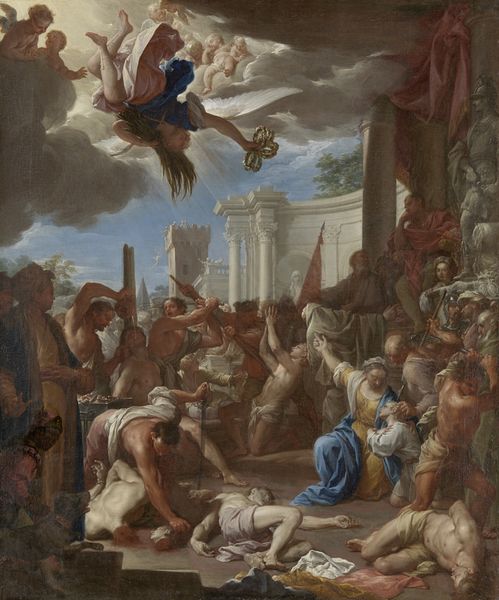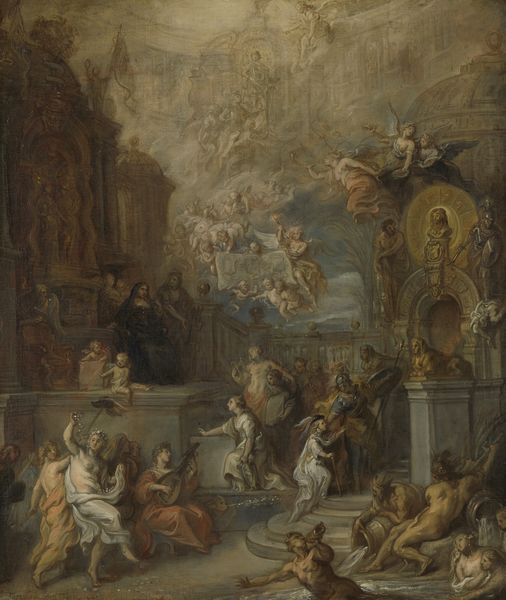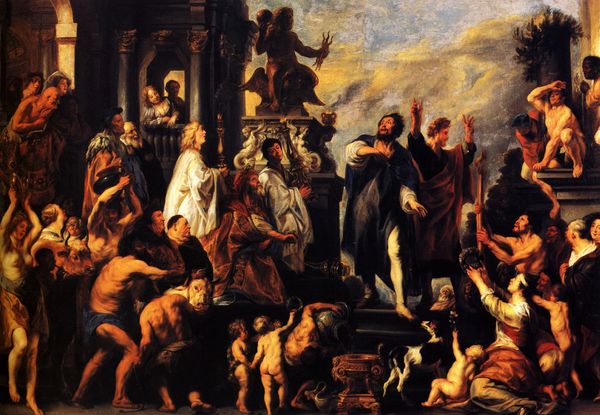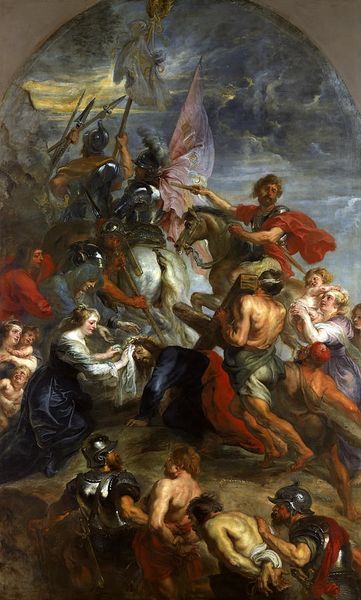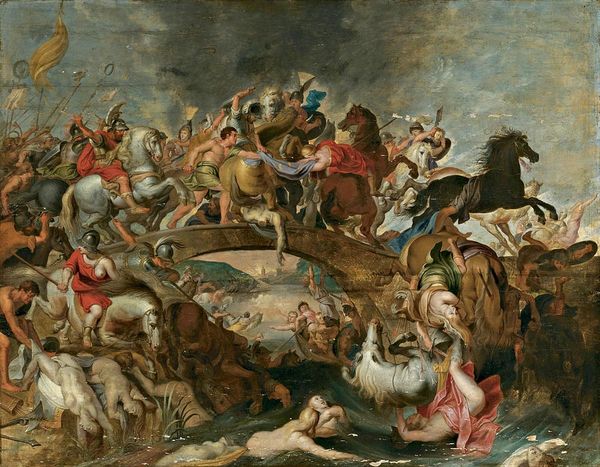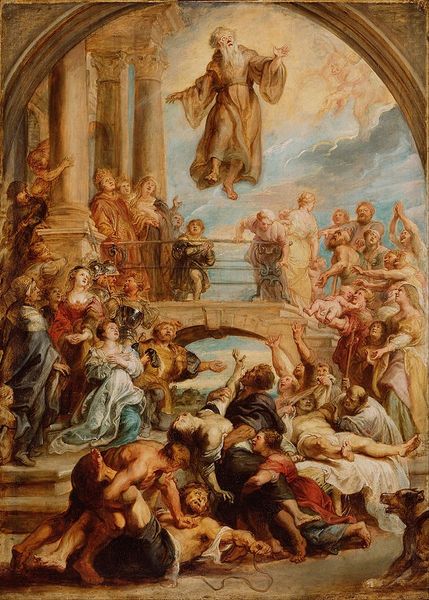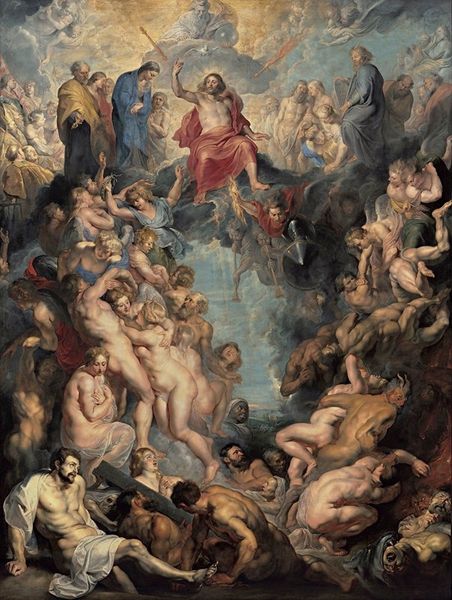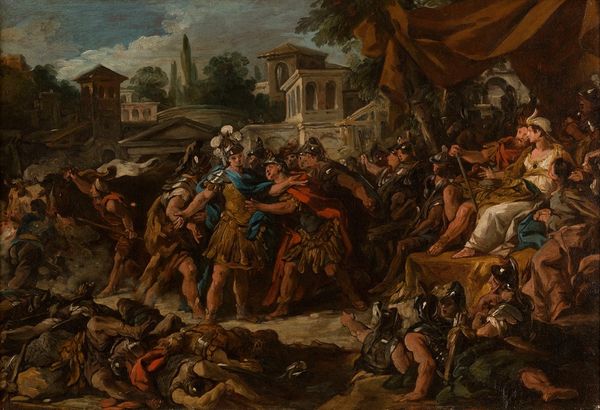
oil-paint
#
allegory
#
baroque
#
dutch-golden-age
#
oil-paint
#
figuration
#
oil painting
#
mythology
#
painting painterly
#
history-painting
Copyright: Public Domain: Artvee
Editor: This is "Triumph of Frederick Henry, Prince of Orange" painted in 1651 by Jacob Jordaens, using oil paint. It’s incredibly busy! The composition seems chaotic, yet also grand. How would you interpret this work through a formalist lens? Curator: The painting presents a complex interplay of lines and shapes. Observe the swirling movement, orchestrated by the diagonal arrangement of figures, from the lower left to the upper right. Notice how the artist directs your gaze. Editor: Yes, the upward motion is definitely there, but the sheer number of figures—humans, horses, even lions—makes it hard to focus on any single point. Is there a deliberate lack of a clear focal point? Curator: Indeed. This visual density is crucial. Jordaens employs a rich color palette, predominantly warm tones, which unifies the composition despite its complexity. The contrast between light and shadow further emphasizes the figures and enhances the dramatic effect. Do you see how each element plays a specific role within the overall design? Editor: I see what you mean about the colours now; they definitely contribute to a sense of unity amidst all the figures. The texture seems important too – rough in places and very smooth in others. Curator: Precisely. The variation in brushwork creates a tactile quality, enriching the visual experience. It draws attention to the artist’s hand and the materiality of the paint itself. What overall effect does this produce, in your opinion? Editor: It’s overwhelming, but impressive. By understanding the visual language, the different angles and shading and textures, I’m getting a better sense of how all the separate elements tie together. Curator: The point isn't necessarily to "get" it, as much as unpack the components and mechanisms.
Comments
No comments
Be the first to comment and join the conversation on the ultimate creative platform.
